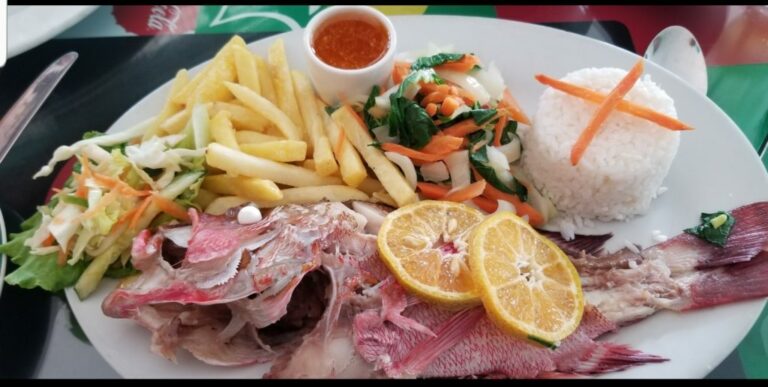Introduction
Fijian cuisine is a reflection of the rich cultural diversity of the South Pacific, where traditional ancient recipes are still being used today. The cuisine is known for being flavorful, simple, and wholesome. Fijian cooking features a vast array of fresh seafood, tropical fruits, and vegetables, which are combined with unique spices and herbs to create a distinct flavor profile.
Root crops in Fijian cuisine
Root crops such as cassava, yams, and taro are a staple in Fijian cuisine, which is a reflection of the early settlers’ influence on the island. These crops are versatile and can be used in many ways, including baking, boiling, or grilling. Fijians also use these root crops to make flour, which is then used to make dishes like dalo roti, a traditional Fijian flatbread.
Unique spices and herbs in Fijian dishes
Fijian cuisine is known for its unique blends of spices and herbs, which are used to give dishes their signature flavor. A common spice used in Fijian dishes is turmeric, which gives dishes a vibrant yellow color and a subtle earthy flavor. Other herbs commonly used include lemongrass, ginger, and pandanus leaves, which add a refreshing and aromatic taste to dishes.
Seafood and coconut as staples in Fijian cooking
Being an island, it is no surprise that seafood is a staple in Fijian cuisine. Fish and shellfish are commonly used in traditional dishes such as kokoda, a dish made with raw fish marinated in coconut milk and lime juice. Coconut is also a staple in Fijian cooking, used for its milk, flesh, and oil, which are used to add richness and depth to dishes.
Taro leaves and their role in Fijian cuisine
Taro leaves are another ingredient commonly used in Fijian cooking. The leaves are typically boiled or steamed, then used as a wrap for fish or meat. They are also used in dishes such as palusami, where the leaves are wrapped around corned beef and cooked in coconut milk.
The use of breadfruit in Fijian dishes
Breadfruit is another staple in Fijian cuisine, used in a variety of ways. It can be boiled, roasted, or fried and is used in dishes such as casseroles or curries. When cooked, breadfruit has a potato-like texture, making it a popular alternative to potatoes in Fijian cuisine.
The significance of yaqona (kava) in Fijian culture
Yaqona, also known as kava, is a drink made from the roots of the kava plant and is an essential part of Fijian culture. It is consumed during important social events, such as weddings or celebrations, and is known for its calming effects. Yaqona is also used in Fijian cooking to add a unique flavor to dishes.
Conclusion: Fijian cuisine’s distinct flavor profile
Fijian cuisine’s unique blend of fresh seafood, tropical fruits, and vegetables, combined with traditional spices and herbs, creates a distinct flavor profile. Root crops, coconut, taro leaves, and breadfruit are staples in Fijian cooking, each adding their own unique taste and texture to dishes. Yaqona, the traditional Fijian beverage, is also a significant ingredient in Fijian cuisine, adding its distinct flavor. Overall, Fijian cuisine is a reflection of the island’s rich cultural heritage and its unique blend of ingredients and flavors.

